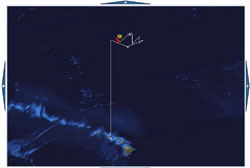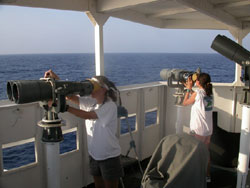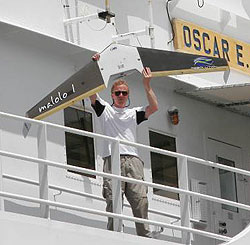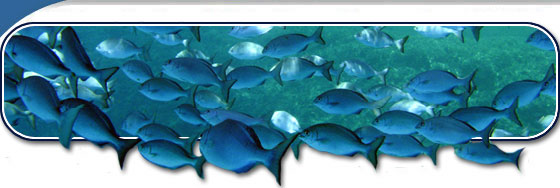Error processing SSI file
|
North Pacific Marine Debris Expedition, Spring 2008
Introduction
 |
| Click the image above to view the ship's current location and expedition cruise track. |
The NOAA ship Oscar Elton Sette is taking part in a 17-day cruise from March 24 to April 9, 2008 from Pearl Harbor, Hawaii, to an area north of Hawaii called the North Pacific Subtropical Convergence Zone (STCZ).
This convergence zone is a narrow band of wind-driven ocean waters several miles wide and stretching thousands of miles across the North Pacific, from 130 degrees West longitude to 160 degrees East. Surface currents in this area tend to concentrate floating materials, such as marine debris, and due to the mixing of productive cooler waters, and less-productive warmer waters it is also a place of unusually high biological productivity. This band can actually be seen from space and was observed as a diffuse line across the Pacific during one of the first space shuttle flights.
The cruise will support three separate missions – oceanographic observations using CTD, or conductivity, temperature, depth sensors, as well as water sampling; marine mammal and marine debris observations using large binoculars called “Big Eyes;” and the first deployment of a prototype Unmanned Aircraft System (UAS) called the Malolo I to detect derelict fishing gear, mostly large nets, concentrated in this area. If nets are detected some will be removed, and others will be satellite tagged in order to track their movement in the Pacific. This UAS project is particularly interesting in that if it works it may provide a mechanism for detecting and retrieving large derelict nets at sea before they wash ashore on fragile coral reefs.
 |
| Marine mammal and marine debris observations using large binoculars called “Big Eyes." |
Nets can cause extensive damage, are more costly to remove once on the reef and represent an entanglement hazard to marine wildlife. Marine debris is one of the primary threats to resources and habitats of the newly created Papahanaumokuakea Marine National Monument in the Northwestern Hawaiian Islands, the largest fully protected marine conservation area in the world.
Marine debris, including derelict fishing gear, is a global problem. The increased reliance on manufactured items (i.e. plastics) which can float, are persistent in the environment, and are frequently improperly disposed of - has led to an abundance of these materials in our oceans. Marine debris has significant ecological impacts, creates navigational hazards and degrades aesthetic value of ocean and coastal environments. Derelict fishing gear can kill fragile corals and pose a deadly entanglement hazard for marine life. Smaller marine debris, are ingested by albatross while foraging for food. Marine debris also acts as a vector for the accelerated introduction of alien species. The currents of the North Pacific collect and trap an enormous amount of marine debris each year. In the Northwestern Hawaiian Islands an estimated 52 metric tons of marine debris is deposited annually on beaches and highly productive coral reefs (Dameron et al 2007).
 |
| The location of large marine debris will be identified during the flight by real time analysis of the video feed from the UAS Malolo 1. |
During the expedition the UAS Malolo 1 will be hand launched from the ship and monitored/piloted by a shipboard control operator. The flying wing shaped Malolo I has a 7 foot wing span and weighs only 10 lbs. The location of large marine debris will be identified during the flight by real time analysis of the video feed from the UAS and telemetry using customized anomaly detection software and transmitted back to the base station. At the end of the survey flight the aircraft will complete a water landing and be recovered by a small boat. This cutting-edge effort hopes to provide a technique to efficiently and cost-effectively locate and remove derelict fishing gear at-sea before it damages sensitive habitats like coral reef.
This groundbreaking project and expedition is a collaborative effort of:
(Top Photo: Paolo Marin)
|



